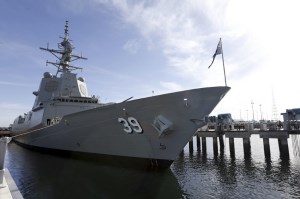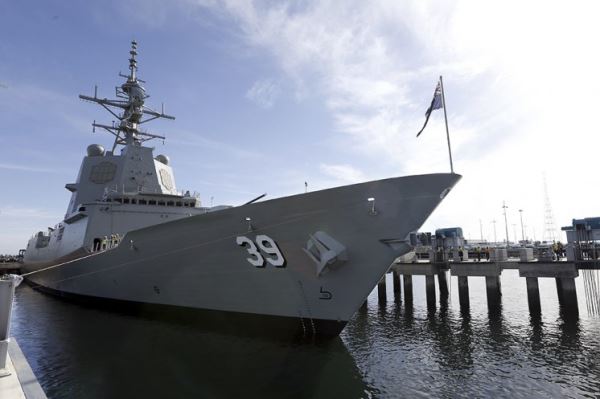A robot that cleans and paints a navy ship while in dry dock is this year’s winning idea in UNSW Sydney’s Maker Games.
Now in its second year, the Maker Games Final Showcase at UNSW’s Round House in Sydney wowed the audience when displayed this week.
On show were prototypes built by budding engineers, inventors, entrepreneurs and designers to solve real-world problems set by industry partners.
Event winners Team Arash responded to the challenge set by a mentor from defence industry group BAE Systems to revolutionise the process of cleaning and painting of naval warships.
After months of brainstorming, bouncing ideas, tinkering with models and seeking advice from academic and industrial mentors, Team Arash emerged with AMAR – Autonomous Magnetic Attraction Robot.
“The robot is designed using magnets to attach to the side of a steel vessel, with hose nozzles that could clean or paint the ship using high pressure water or paint,” said team member Evan Pignatelli.
Work simulation
During their pitch to the judges, the team put AMAR through its paces in a simulation of the robot working on a ship’s exterior.
AMAR appeared to be a compact, flat box on four discreet wheels, about the size of a dinner tray, that moved autonomously back and forth along a makeshift ship’s hull that was set up on stage at an acute angle.
The team said conventional cleaning and painting of a naval ship was extremely expensive, dangerous and laborious, involving the vessel being lifted into dry dock with many maintenance workers toiling in often dangerous and precarious conditions, costing $250,000 a day.
AMAR requires only one person per device to oversee its operation, and as well as eliminating danger, it can reduce the maintenance bill by millions of dollars per ship.
Networking at Silicon Beach
The four winning members of Team Arash – Tom Grimes, Evan Pignatelli, Edwin Lipman and Kiel Allen – will be flown to California’s Silicon Beach, the tech hub of the western beach suburbs of Los Angeles where they will network with leading engineering and design organisations over the course of one week.
Runner-up in this year’s Maker Games was Team Whipper Snappers who responded to a challenge put to them by 5B Solar. Their task was to find an easier way to stop grass from interfering with solar panels in an outdoor installation at ground level where panels were just 200mm above the ground.
Team Whipper Snappers’ solution was to design a new kind of autonomous lawn mower, one that was wider, flatter than anything on the market, and had three sensors.
Highly commended prototypes
Highly commended in the Maker Games was Team Riveract who designed a flash flood alert system powered by social media and publicly available weather data that provided six hours’ notice to people in flood-prone villages in Myanmar.
Also highly commended was Team Erudite, who designed a system that could accurately measure and record data about the exact position of the pilot control stick in an aeroplane, allowing this data to be used more accurately for flight-simulator training.
Other prototypes included:
- A reimagined orthotic device to treat serious foot and leg problems
- A camera sensor to measure and collect data on agricultural plants’ health
- A bus booking app that caters for low-density, underserviced regions of a city
- An interactive mock-up of a nuclear hot cell that houses a mechanical manipulator arm for training purposes
- A wearable device that alerts health providers when elderly people are incapacitated due to a fall or stroke
- Specially designed and easily installed PVC tubes that remove hydrogen sulphide from sewer wet wells
- A device that monitors vibrations and system failures of induction motors
- A kayak made entirely from PVC pipes and recycled plastic water bottles for less than $100 and constructed in three hours
- A flexible visual display that pulses and interacts with its environment to be used in performances by the Sydney Dance Company
- A contactless detection system that identifies cracks in air-to-air fuelling hoses during flight
Associate Dean (Industry and Innovation) at UNSW Engineering, Professor Ian Gibson was impressed with how each of the 14 groups zeroed in on the mechanical, digital, electrical or computational requirements to arrive at highly original solutions to these real-world problems.
UNSW Engineering is ranked 27th in world rankings of engineering schools, of which there are about 7000 in the world.
UNSW President and Vice-Chancellor Professor Ian Jacobs awarded the prize to the winners.
“This represents the very best of what I would call UNSW as an exemplar of generosity and partnership,” he said.


